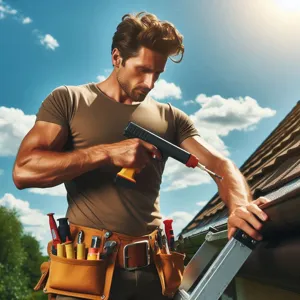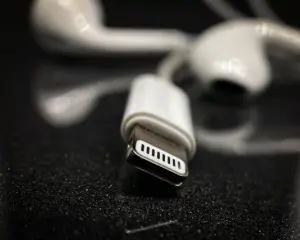A leaky roof can be a homeowner’s worst nightmare, turning a tranquil sanctuary into a source of stress and worry.
Whether it’s the result of heavy rainfall, age-related wear, or unexpected damage, a leak can lead to costly repairs if not addressed promptly. Understanding how to tackle this issue effectively is crucial for maintaining the integrity of your home. In this ultimate guide, we will walk you through the top seven essential steps to effectively fix a leaky roof, providing you with the knowledge and confidence to take on this task. From identifying the source of the leak to implementing necessary repairs and preventative measures, we’ll cover everything you need to know to safeguard your home from water damage. Say goodbye to the drip-drip-drip of anxiety and hello to peace of mind as you restore your roof to its former glory!
1. Introduction: Understanding Roof Leaks

A leaky roof can feel like a silent intruder, gradually infiltrating your home and causing havoc before you even realize it. Understanding roof leaks is the first step in effectively addressing and preventing them. Roof leaks can stem from various sources, including age, weather conditions, poor installation, and even debris buildup. They aren’t just about a few drips during a storm; the consequences can escalate quickly, leading to mold growth, structural damage, and costly repairs.
As the first line of defense against the elements, your roof plays a crucial role in maintaining the integrity of your home. Understanding how different components of your roof work together is vital. From shingles and flashing to gutters and underlayment, each part has a specific function that contributes to waterproofing your living space. Recognizing where vulnerabilities lie can help you spot potential issues before they become significant problems.
Moreover, it’s important to note that not all leaks are obvious. Sometimes, water stains on ceilings or walls may be the only indicators, often appearing long after the leak has started. This can lead to frustration and confusion, especially for homeowners who may not know where to begin looking. By taking the time to educate yourself about the common causes and signs of roof leaks, you empower yourself with the knowledge needed to act swiftly and effectively when problems arise.
In this guide, we will delve into practical steps to identify, address, and ultimately fix a leaky roof, ensuring your home remains a safe and dry sanctuary. Whether you’re a seasoned DIY enthusiast or a novice homeowner, understanding the intricacies of roof leaks will prepare you for effective repair and maintenance, setting the stage for a resilient and leak-free roof.
2. Step 1: Identify the Source of the Leak
Identifying the source of the leak is the crucial first step in effectively fixing a leaky roof. Before you grab your tools or call in a professional, take some time to investigate the problem area thoroughly. Start by checking your attic or crawl space, especially after a rainstorm, as this is often where leaks manifest first. Look for any signs of water stains, mold, or dark patches on the ceiling or rafters, which may indicate moisture intrusion.
Next, inspect the exterior of your roof. Look for missing or damaged shingles, cracked tiles, or any debris that may be blocking drainage paths. Pay close attention to areas around chimneys, vents, and skylights, as these are common culprits for leaks due to improper sealing or flashing issues. If your roof has valleys, be sure to check those as well, as they can easily trap water and lead to leaks if not maintained properly.
once you’ve identified potential problem areas, try to trace the water’s path. This might involve getting on a ladder to closely examine the roof’s surface. Use a hose to simulate rain; by systematically watering sections of the roof, you can pinpoint the exact location where water enters. Remember to work carefully and safely—if you’re not comfortable on a ladder, consider enlisting the help of a professional to ensure both your safety and an accurate diagnosis.
By thoroughly identifying the source of the leak, you lay the groundwork for effective repairs. This step is essential not only for solving the immediate issue but also for preventing future leaks and protecting your home from further damage. Once you have a clear understanding of the source, you can move on to the subsequent steps with confidence, armed with the knowledge needed to restore your roof to its optimal condition.
3. Step 2: Inspect the Roof Condition

Once you’ve identified the source of the leak, the next crucial step is to thoroughly inspect the overall condition of your roof. This means examining not just the area around the leak, but the entire roof surface for signs of wear and potential weaknesses. Start by safely accessing your roof—if possible, use a sturdy ladder and, if necessary, consider safety harnesses to protect yourself during the inspection.
As you walk along the roof, look for broken or missing shingles, as these are common culprits in leaks. Pay attention to any areas where shingles are curling, buckling, or have lost their granules, as these can indicate aging or damage that could lead to further leaks down the line. Don’t forget to inspect the flashing—the metal strips that help seal joints and prevent water infiltration. Check for rust, gaps, or cracks in the flashing, particularly around chimneys, vents, and skylights, as these are common areas where leaks can occur.
While you’re up there, take note of any other issues, such as sagging areas that might suggest structural damage or pooling water that indicates poor drainage. If your roof has a flat section, the presence of standing water can be particularly troublesome and may require immediate attention.
Once you’ve completed your inspection, make a detailed list of the issues you’ve found. This will not only help you prioritize repairs but also give you a clearer idea of whether you can handle the fixes yourself or if it’s time to call in a professional. Remember, addressing roof problems promptly can save you from more extensive damage and costly repairs in the future, so take this inspection seriously!
4. Step 3: Gather Necessary Tools and Materials
Before you dive into the hands-on work of fixing your leaky roof, it’s essential to gather all the necessary tools and materials. This preparation phase will ensure you have everything at your fingertips, minimizing interruptions and maximizing efficiency.
Start by assessing the extent of the damage to determine what tools you will need. Common items for roof repairs include a sturdy ladder, roofing nails, a hammer, a utility knife, and a pry bar. If your roof is steep or you will be working at significant heights, consider investing in a harness for safety. Don’t forget gloves to protect your hands and safety goggles to shield your eyes from debris.
Next, identify the materials required for the repair. Depending on the type of roof you have—shingle, metal, or flat—you may need specific materials. For shingle roofs, ensure you have matching replacement shingles, roofing cement, and underlayment. For metal roofs, you’ll need metal sheets, sealant, and potentially new screws. If your roof has a flat section, waterproofing membrane or patches may be necessary.
Prepare your workspace by clearing any debris, such as leaves or branches, that could obstruct your repair efforts. It’s also wise to have a tarp on hand to protect the area below your roof from any falling materials.
By gathering all the necessary tools and materials beforehand, you set the stage for a smoother and more efficient repair process. With everything ready, you can tackle the leak with confidence, ensuring your roof is restored to its former glory and safeguarding your home from future water damage.
5. Step 4: Safety Measures Before Climbing onto the Roof

Before you take that first step onto your roof, it’s essential to prioritize safety. Climbing onto a roof, even for seasoned DIYers, poses significant risks, and taking the appropriate precautions can mean the difference between a simple repair and a trip to the hospital. Here are the key safety measures you should adopt before embarking on your roofing project.
First and foremost, equip yourself with the right gear. A sturdy pair of non-slip shoes with good grip is crucial, as they will provide stability on potentially slippery surfaces. Additionally, consider wearing a hard hat to protect against falling debris and leg protection to guard against sharp tools or unexpected slips.
Next, don’t underestimate the importance of using a harness. If your roof has a steep slope, a safety harness anchored to a secure point is a must. This will provide you with an extra layer of security, allowing you to move more freely without the fear of losing your balance.
Before you ascend, perform a thorough inspection of your roof from the ground. Look for any signs of damage or instability that could pose hazards, such as broken shingles, sagging sections, or loose flashing. This preemptive step can help you avoid precarious situations once you’re up there.
Furthermore, check the weather conditions. Avoid working on your roof during rainy, windy, or icy days, as these elements can make surfaces treacherous and increase the risk of accidents. Ideally, choose a clear day to ensure maximum visibility and a safer working environment.
Lastly, don’t hesitate to ask for help. Whether it’s a friend, family member, or a professional contractor, having someone on the ground to support you can be invaluable. They can assist with handing you tools or even provide a quick rescue if the situation calls for it.
By following these safety measures, you’ll set yourself up for a successful and secure roofing repair. Remember, a cautious approach not only protects you but also ensures that your focus remains on fixing that leaky roof effectively.
6. Step 5: Temporary Fixes for Immediate Relief
When a leaky roof strikes, it can feel like a race against time to mitigate the damage before it worsens. Step 5 of our guide emphasizes the importance of implementing temporary fixes for immediate relief while you plan a more permanent solution.
First and foremost, it’s essential to act quickly. If you notice water dripping from the ceiling or an obvious leak, your first line of defense is to contain the water. Place a bucket or a large container directly under the leak to catch any drips, preventing water from pooling on the floor and potentially damaging your interior spaces. This simple step can save you from costly repairs to your flooring and furnishings.
Next, assess the leak’s source from the interior. If it’s safe to do so, climb into your attic with a flashlight to inspect the area. Look for signs of water damage, such as dark spots on the insulation or beams, and try to pinpoint the leak’s origin. While you may not be able to fix the roof just yet, you can place a tarp or a waterproof sheet over the area to shield it from the elements, especially if rain is in the forecast. Secure the tarp well, using roofing nails or weights to ensure it stays in place until you can tackle the permanent repair.
In addition to physical barriers, consider using roofing tape or sealant as a temporary measure. If the leak is minor, applying roofing tape over small cracks can provide an immediate stopgap solution. Just be sure to choose a product specifically designed for roofing materials, as this will ensure better adhesion and longevity until you can execute proper repairs.
Lastly, keep your customers informed if the leaking roof affects your business operations. Transparency fosters trust, and a simple communication about the situation and your proactive measures can go a long way in maintaining customer loyalty.
By implementing these temporary fixes, you not only protect your home and belongings but also buy yourself time to plan for a thorough and effective long-term repair. Remember, these solutions are just that—temporary. Prioritize scheduling a professional inspection to assess the full extent of the damage and execute the necessary repairs as soon as possible. Your home deserves the best care!
7. Step 6: Permanent Repair Techniques

Once you’ve identified the source of the leak and taken the necessary temporary measures to mitigate damage, it’s time to focus on permanent repair techniques that will restore your roof’s integrity. This step is crucial not only for sealing the leak but also for ensuring the longevity of your roofing system.
**1. Replace Damaged Shingles or Tiles:** If you’ve discovered missing, cracked, or broken shingles or tiles, replacing them is essential. Start by carefully removing the damaged pieces. For asphalt shingles, use a utility knife to cut around the affected area, and lift the shingles away. Install new shingles by sliding them under the existing ones and securing them with roofing nails. Ensure that the new shingles align with the others for a cohesive look.
**2. Repair Flashing:** Flashing, the metal strips used to direct water away from critical areas, can often be the culprit behind leaks. If you notice rust or gaps in your flashing, it may need to be replaced or resealed. Remove the old flashing carefully and install new flashing using roofing cement or a similar adhesive to ensure a watertight seal.
**3. Seal Roof Penetrations:** Areas around vents, chimneys, and skylights are common leak points. Check for cracks in the caulking or gaps around these penetrations. Clean the area and apply a high-quality roofing sealant to create a waterproof barrier. For larger gaps, consider using a rubber boot or other specialized flashing.
**4. Consider Roof Coatings:** For flat roofs or those in need of additional protection, applying a roof coating can add an extra layer of defense against leaks. These coatings are designed to reflect UV rays and provide a waterproof barrier, extending the life of your roof. Ensure the surface is clean and dry before application, and follow the manufacturer’s instructions for the best results.
**5. Inspect and Clean Gutters and Downspouts:** Clogged gutters can lead to water pooling on your roof, contributing to leaks. Regularly inspect and clean your gutters to ensure proper drainage. If you find that your gutters are sagging or damaged, repair or replace them to maintain an effective water management system.
By employing these permanent repair techniques, you can effectively address leaks and prevent future issues. Regular maintenance and inspections are key to keeping your roof in optimal condition, ensuring your home remains safe and dry for years to come. Remember, if you’re ever unsure about the repairs or the extent of the damage, consult a professional roofing contractor to assess your situation and provide expert guidance.
8. Step 7: Regular Maintenance to Prevent Future Leaks
### Step 7: Regular Maintenance to Prevent Future Leaks
Once you’ve successfully addressed a leaky roof, the journey doesn’t end there. In fact, the most crucial phase of roof care begins with regular maintenance to prevent future leaks and extend the life of your roofing system. Think of your roof as a protective shield—it requires consistent upkeep to remain effective against nature’s elements.
Start by scheduling seasonal inspections, ideally in the spring and fall, to catch any potential issues before they escalate. During these inspections, check for cracked or missing shingles, rust spots on metal roofs, and any signs of wear on flashing or seals around vents and chimneys. Even minor damage can lead to significant problems if left unattended.
Cleaning your gutters and downspouts is another essential task. Clogged gutters can lead to water pooling on your roof, increasing the risk of leaks. Ensure that they are clear of debris and functioning properly, allowing rainwater to flow freely away from your home.
In addition to these visual checks, consider investing in a roof maintenance plan offered by professional roofing contractors. These plans often include routine inspections, cleaning, and necessary repairs, providing peace of mind that your roof is in expert hands.
Lastly, be proactive in addressing any changes to your roof’s condition. If you notice any unusual spots or water stains inside your home, don’t delay in investigating further. Early detection is key to preventing minor issues from transforming into costly repairs.
By committing to regular maintenance, you not only protect your investment but also ensure that your home remains safe and dry for years to come. A well-maintained roof is a resilient roof, ready to weather any storm that comes its way.
9. When to Call a Professional Roofer
While some roofing issues can be tackled as DIY projects, there are instances when it’s best to call in a professional roofer. Knowing when to seek expert help is crucial to ensuring the integrity of your roof and your home. If you find yourself facing significant water damage, noticing sagging areas, or witnessing extensive leaks that are beyond a simple patch job, it’s time to reach out to a qualified professional.
Furthermore, if your roof is older—typically over 20 years—it’s wise to consult an expert even for minor issues, as older roofs may require more than just repairs; they might need a complete replacement. Professionals bring invaluable knowledge and experience, allowing them to accurately assess the extent of the damage and recommend the most effective solutions.
Additionally, if you’re uncomfortable working at heights or lack the necessary tools, don’t hesitate to call in a pro. Safety should always be your top priority. Professional roofers have the equipment and training to handle repairs safely and efficiently, minimizing the risk of accidents or further damage to your roof. Reputable roofing companies often provide warranties on their work, offering peace of mind that your investment is protected.
Ultimately, knowing when to call a professional can save you time, money, and potential headaches down the road. Trusting your roof to an expert ensures that it remains a sturdy shield over your home for years to come.
10. Common Mistakes to Avoid When Fixing a Roof Leak
When tackling the issue of a leaky roof, it’s essential to be aware of common pitfalls that can hinder your efforts and lead to further complications. Here are some frequent mistakes that DIYers and even seasoned professionals should avoid to ensure a successful repair:
**1. Underestimating the Source of the Leak:** One of the biggest mistakes is assuming the leak originates directly above the visible water stains on your ceiling. Roof leaks can travel along beams and trusses, making it crucial to trace the leak back to its source accurately. Always conduct a thorough inspection to pinpoint the actual location of the damage.
**2. Skipping Safety Precautions:** Climbing onto a roof can be dangerous, and neglecting safety measures is a recipe for disaster. Always wear appropriate gear, such as non-slip shoes, a safety harness, and use a sturdy ladder. If the roof is steep or slick, consider hiring a professional instead.
**3. Using Inadequate Materials:** Opting for cheap or inappropriate materials can lead to more leaks down the line. Invest in high-quality roofing materials that are suited for your specific roof type and climate. It’s worth spending a little more upfront to avoid costly repairs in the future.
**4. Ignoring Weather Conditions:** Attempting repairs during rain, snow, or high winds can be not only ineffective but also dangerous. Always check the weather forecast and choose a dry, calm day to make your repairs. This will ensure that materials adhere properly and that you can work safely.
**5. Overlooking Ventilation Issues:** Poor attic ventilation can exacerbate roof leaks and lead to mold and mildew growth. When fixing a roof, take the opportunity to assess and improve ventilation to prevent future issues. This will help regulate temperature and moisture levels, extending the life of your roof.
**6. Failing to Clean the Area:** Before starting repairs, it’s crucial to clear away debris, moss, or old materials from the repair site. Not only does this ensure a clean surface for adhesion, but it also allows you to properly assess the extent of the damage.
**7. Neglecting Future Maintenance:** After successfully fixing a roof leak, many homeowners forget to schedule regular maintenance checks. To avoid future leaks, make it a habit to inspect your roof at least twice a year, trimming overhanging branches, clearing gutters, and taking note of wear and tear.
By steering clear of these common mistakes, you can enhance the effectiveness of your roof repair efforts and ensure your home remains protected against the elements for years to come. Remember, a well-repaired roof not only safeguards your home but also adds to its overall value and aesthetic appeal.
11. Cost Considerations for DIY Repairs vs. Professional Help
When it comes to fixing a leaky roof, one of the most significant decisions you’ll face is whether to tackle the repairs yourself or to hire a professional. Both options come with their own set of cost considerations that can greatly impact your budget and the overall outcome of the repair.
**DIY Repairs: Weighing the Savings and Risks**
Taking the DIY route may seem like a financially savvy choice at first glance. The primary appeal is the potential savings on labor costs, allowing you to allocate funds toward materials instead. Simple repairs, such as patching small leaks or replacing a few shingles, can often be completed with just a handful of tools and a little know-how. Many resources, from online tutorials to home improvement books, can guide you through the process.
However, it’s crucial to be realistic about your skill level and the complexity of the job. If you’re not familiar with roofing materials or techniques, mistakes can lead to further damage, which may end up costing you more in the long run. Additionally, consider the cost of renting or purchasing specialized tools and the time you’ll spend completing the project. Remember, your time is valuable, and if the repair ends up taking longer than expected, the savings may not be worth the effort.
**Professional Help: Investing in Expertise**
On the other hand, hiring a professional roofing contractor provides the advantage of expertise and experience. Professionals can quickly assess the source of the leak, offer solutions, and complete the repair efficiently, often in a fraction of the time it would take an inexperienced homeowner. They also bring access to quality materials, which can enhance the longevity of the repair.
While the upfront cost may seem higher, this investment can be justified by the peace of mind it brings. Many reputable contractors offer warranties on their work, ensuring that if something goes wrong, you won’t be left to foot the bill. Furthermore, in many cases, professionals can spot other potential issues that an untrained eye might miss, saving you from future headaches and expenses.
**Finding the Right Balance**
Ultimately, the decision between DIY repairs and hiring a professional comes down to assessing your skills, the severity of the leak, and your budget. If you’re confident in your abilities and dealing with a minor issue, DIY could be the way to go. However, for more complicated repairs or if you’re unsure, it’s often wiser to invest in professional help. Weighing these cost considerations carefully will help you make the best choice for your leaky roof. Remember, a roof is a critical part of your home, and ensuring it’s fixed correctly is paramount to protecting your investment.
12. Conclusion: Ensuring Long-Term Roof Integrity
In conclusion, ensuring the long-term integrity of your roof goes beyond just addressing immediate leaks. It requires a proactive approach to maintenance and care that can save you time, money, and headaches down the line. By investing in regular inspections, timely repairs, and quality materials, you can significantly extend the lifespan of your roof and maintain its performance against the elements.
Remember, a well-maintained roof not only protects your home but also contributes to its overall value. Engage with professionals for thorough assessments, especially after severe weather or significant changes in your roof’s condition. Building a relationship with a trusted roofing contractor can provide you with peace of mind, knowing that you have an expert on hand to guide you through any necessary repairs or upgrades.
Moreover, keep an eye on the small details—such as gutters, flashing, and shingles—as these components play a crucial role in your roof’s effectiveness. Simple steps like cleaning debris from gutters and checking for loose or damaged shingles can prevent larger issues before they arise.
Ultimately, a little vigilance and care can lead to a resilient roof that stands the test of time. By following the steps outlined in this guide, you can ensure that your roof remains a steadfast shield, safeguarding your home and everything within it for years to come. So take those proactive steps today, and invest in the longevity and integrity of your roofing system—it’s a decision that will pay off in comfort, safety, and savings.
13. Additional Resources for Homeowners
When it comes to managing a leaky roof, knowledge is your best ally. Fortunately, there are a plethora of additional resources available for homeowners that can empower you to tackle roof repairs with confidence. Whether you’re a seasoned DIY enthusiast or a first-time homeowner, these resources can provide invaluable insights and guidance.
First and foremost, consider diving into online platforms that specialize in home improvement. Websites such as HomeAdvisor and Angie’s List not only connect you with local contractors but also offer a wealth of articles, videos, and tutorials on roof repair techniques. These resources can help you understand the nuances of roof maintenance and provide step-by-step instructions for various repair methods.
YouTube is another treasure trove of visual content. Search for channels dedicated to home improvement, where skilled professionals demonstrate everything from patching up small leaks to replacing entire sections of roofing material. Watching these tutorials can give you a clearer understanding of the tools and materials you’ll need, as well as tips to avoid common pitfalls.
Don’t overlook the value of local hardware stores or home improvement centers. Many of these establishments offer workshops or classes that cover DIY repairs, including roofing. Attending one of these sessions can not only provide hands-on experience but also give you the chance to ask questions from knowledgeable staff.
Additionally, local government websites and community organizations may provide helpful resources on home maintenance and safety standards. They often offer brochures or guides that cover everything from seasonal roof inspections to understanding local building codes.
Finally, consider joining homeowner forums or social media groups where you can engage with others who have faced similar roofing challenges. Sharing experiences and advice can lead to practical solutions and may even help you discover local contractors who come highly recommended by your peers.
By tapping into these additional resources, you can arm yourself with the knowledge needed to effectively address a leaky roof and ensure your home remains a safe and comfortable haven for years to come.
14. Frequently Asked Questions about Roof Leaks
### 14. Frequently Asked Questions about Roof Leaks
When it comes to maintaining the integrity of your home, understanding roof leaks is crucial. Here, we address some of the most frequently asked questions about roof leaks to help homeowners navigate this common issue with confidence and clarity.
**1. What are the most common causes of roof leaks?**
Roof leaks can stem from a variety of sources, including damaged shingles, improperly sealed flashing, clogged gutters, or even ice dams during winter months. Regular inspections can help identify and mitigate these risks before they lead to significant damage.
**2. How can I tell if my roof is leaking?**
Signs of a roof leak often manifest as water stains on ceilings or walls, mold growth, or a musty odor. If you notice any of these symptoms, it’s vital to investigate further, as even small leaks can lead to extensive water damage over time.
**3. Should I tackle a roof leak myself, or hire a professional?**
While minor leaks may be manageable for the DIY enthusiast, it’s generally advisable to consult a professional roofer, especially if you are uncomfortable working at heights or if the leak is extensive. Professionals have the expertise and tools necessary to assess the situation accurately and perform safe repairs.
**4. How can I prevent roof leaks?**
Preventative measures include regular roof inspections, keeping gutters clear of debris, maintaining proper ventilation, and addressing minor repairs promptly. Investing in quality roofing materials and proper installation will also enhance your roof’s durability against leaks.
**5. What should I do if I discover a leak?**
If you find a leak, the first step is to contain the water damage. Use buckets to catch dripping water and move valuables out of the affected area. Then, contact a roofing professional to assess the damage and schedule necessary repairs.
**6. How much will it cost to repair a roof leak?**
Repair costs can vary widely depending on the extent of the damage and the roofing materials involved. On average, homeowners can expect to pay anywhere from $200 to $1,500 for roof leak repairs. Getting multiple estimates from contractors can help you find the best price for your situation.
**7. How often should I inspect my roof for leaks?**
It’s recommended to conduct roof inspections at least twice a year—preferably in the spring and fall. Additionally, post-storm inspections are important to check for damage that may have resulted from heavy rain, snow, or high winds.
By addressing these frequently asked questions, we hope to empower you with the knowledge needed to handle roof leaks effectively. Remember, proactive maintenance and prompt action can save you time, money, and stress in the long run.
In conclusion, addressing a leaky roof promptly and effectively is essential for maintaining the integrity of your home and ensuring your peace of mind. By following the top seven steps outlined in our ultimate guide, you can tackle this common issue with confidence and prevent further damage. Remember to assess the problem thoroughly, gather the right materials, and take your time with each step to ensure a lasting repair. Whether you choose to do it yourself or enlist the help of professionals, being proactive about roof maintenance will save you time and money in the long run. We hope this guide empowers you to handle your leaky roof with ease, allowing you to enjoy a safe and dry home for years to come. Happy repairing!






